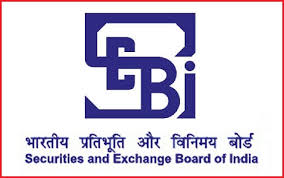 Capital markets regulator SEBI has said that Foreign Venture Capital Investors (FVCIs) can be granted registration as a foreign portfolio investor if they meet certain guidelines.
Capital markets regulator SEBI has said that Foreign Venture Capital Investors (FVCIs) can be granted registration as a foreign portfolio investor if they meet certain guidelines.
The announcement came following a query from designated depository participant seeking clarification with regard to any restrictions on applicants, holding registration as a FVCI, from obtaining registration as a FPI (Foreign Portfolio Investor).
FVCI is an investor incorporated or established outside of India who can invest either in a domestic venture capital fund or a venture capital undertaking (domestic unlisted company), while FPI comprises of FIIs, sub-accounts and Qualified Foreign Investors.
In the circular, Securities and Exchange Board of India (SEBI) said depository participants may consider an applicant, holding FVCI registration, for grant of registration as a FPI.
The capital markets regulator “do not expressly prohibit FVCI from holding registration as a FPI.” However, the registration is subject to certain criteria like the applicant complies with the eligibility criteria as prescribed under the FPI regulations.
Other criteria include funds raised, allocated and invested must be clearly segregated for both registrations, reporting of transactions must be done separately and there should be clear segregation of securities held under FVCI and FPI registrations.
“Separate accounts must be maintained with the custodian for execution of trades. However, such an applicant shall have same custodian for its activities as FPI and FVCI,” SEBI noted.
Also, to attract technology startups to the domestic stock markets, SEBI is all set to make their listing and fund raising requirements easier. The final norms, which would be presented for approval from the SEBI’s board later this month, have been finalised after taking into account suggestions from all stakeholders to the draft guidelines released in March, sources said.
Asking technology startups founded by Indians to remain within the country, SEBI Chairman U K Sinha, last weekend, had promised an easier set of regulations for them to get listed and raise funds from the domestic stock market. “We are going to take a decision very soon in this regard. We are looking into how to make it easier for them to raise money,” Sinha had said.
The new norms are expected to help startup companies raise funds within India and stop their flight to overseas markets. “What is happening today is most of these startups, who have been reasonably successful, they are getting attracted to the New York Stock Exchange or Singapore Stock Exchange,” Sinha had said.
“They do not want to get listed here for varieties of reasons. They are getting attracted to foreign markets. Our effort is to provide a mechanism that they get listed in India itself, for the benefit of the country and for the benefit that the country’s startups remain within the country,” he had added.
Under the new norms, the entire pre-issue capital is expected to be locked-in for a period of six months for all shareholders. At present, promoters are required to offer a minimum of 20 per cent of post-issue capital as lock-in for a period of three years. Besides, SEBI is expected to make easier disclosure norms for startup listings. While filing the draft offer document with the capital market watchdog, such firms will only need to disclose broad objectives in line with the major international jurisdictions.
SEBI has already made it easier for the Small and Medium Enterprises (SMEs) to raise money from capital markets. “SMEs are primarily dependent on bank loans today and we know that banks have their own limitations. We have created separate platforms for SMEs at the two top exchanges BSE and NSE. We have balanced the requirement of safeguarding the investors and also facilitating the fund requirement of the SMEs.
Source: http://yourstory.com/2015/06/sebi-allows-foreign-venture-funds/






